

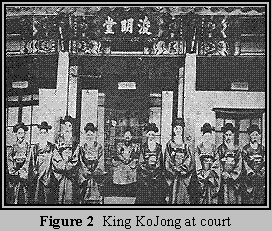 Though the mandate of rule was accepted by the Confucianists, probably
because the Japanese policy toward them was protective. Additionally the
Confucian examination system had come to an end , effectively granting
officials under the King secure positions. The end of the Confucian examination
system would also ensure a slow death for the Imperial system, cutting
the artery that supplied fresh recruits to the Imperial system the officials
resting in the existing stream of power would become more corrupt. This
also left the Japanese free to replace officials with their own members
as it was deemed necessary, or once positions became free. Hence one would
expect the response of Korean Confucianists not to be as opposing or antagonistic
as other elements of society. For the vast majority of Koreans this position
would create not only hostility and resentment toward the new ruling power,
but lead to the rise and formation of independence organisations, from
which then originated the 3-1 Movement.
Though the mandate of rule was accepted by the Confucianists, probably
because the Japanese policy toward them was protective. Additionally the
Confucian examination system had come to an end , effectively granting
officials under the King secure positions. The end of the Confucian examination
system would also ensure a slow death for the Imperial system, cutting
the artery that supplied fresh recruits to the Imperial system the officials
resting in the existing stream of power would become more corrupt. This
also left the Japanese free to replace officials with their own members
as it was deemed necessary, or once positions became free. Hence one would
expect the response of Korean Confucianists not to be as opposing or antagonistic
as other elements of society. For the vast majority of Koreans this position
would create not only hostility and resentment toward the new ruling power,
but lead to the rise and formation of independence organisations, from
which then originated the 3-1 Movement.
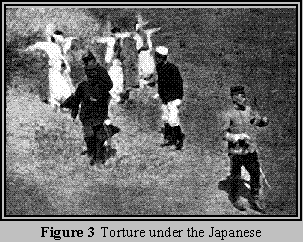 The Gendarmerie were mostly used by the Japanese during the initial
phases of Colonial establishment in order to impose militarily, a civil
administration more quickly than otherwise. They were used in Korea up
until 1919, and this is probably because around 95% of the population of
the peninsula was indigenous. The impact of the Russo-Japanese War (1904-1905)
saw Japan help establish a modern style police force in Korea. Shortly
before the annexation, Japan would take complete control of Korean police
affairs in order to merge the civil and military police forces. The new
forces were put under the guidance of the new police headquarters in Seoul.
With the Gendarmerie placed in the positions of leadership and responsibility,
such as the Chief of Police and Heads of the Provincial Forces. Later the
unwillingness on the part of the Japanese military men to switch from the
gendarme dominated model, to a more civil style of policing, would account
for the Japanese failure to prevent what was essentially a localised demonstration
(the 3-1 Movement) from developing into a nation-wide anti-Japanese movement.
In August of 1919, the Gendarmerie were abolished in Korea, partly
due to international but more essentially internal pressures generated
by the March 1st Independence Movement. A civil police force was then installed
as the only policing force within Korea.
The Gendarmerie were mostly used by the Japanese during the initial
phases of Colonial establishment in order to impose militarily, a civil
administration more quickly than otherwise. They were used in Korea up
until 1919, and this is probably because around 95% of the population of
the peninsula was indigenous. The impact of the Russo-Japanese War (1904-1905)
saw Japan help establish a modern style police force in Korea. Shortly
before the annexation, Japan would take complete control of Korean police
affairs in order to merge the civil and military police forces. The new
forces were put under the guidance of the new police headquarters in Seoul.
With the Gendarmerie placed in the positions of leadership and responsibility,
such as the Chief of Police and Heads of the Provincial Forces. Later the
unwillingness on the part of the Japanese military men to switch from the
gendarme dominated model, to a more civil style of policing, would account
for the Japanese failure to prevent what was essentially a localised demonstration
(the 3-1 Movement) from developing into a nation-wide anti-Japanese movement.
In August of 1919, the Gendarmerie were abolished in Korea, partly
due to international but more essentially internal pressures generated
by the March 1st Independence Movement. A civil police force was then installed
as the only policing force within Korea.
 It should also be noted that retaliation and resentment toward the former
colonial masters is still extremely high, no Korean will easily yield to
the notion that the strip of water between the two countries is known as
the Sea of Japan. Even if the knowledge of the correct terminology exists,
the Koreans still tend to use a direct-translation method from their mother
tongue to English, citing the water as the East Sea. This also proves to
highlight the fact of a biased education system still in place within Korea.
It should also be noted that retaliation and resentment toward the former
colonial masters is still extremely high, no Korean will easily yield to
the notion that the strip of water between the two countries is known as
the Sea of Japan. Even if the knowledge of the correct terminology exists,
the Koreans still tend to use a direct-translation method from their mother
tongue to English, citing the water as the East Sea. This also proves to
highlight the fact of a biased education system still in place within Korea.
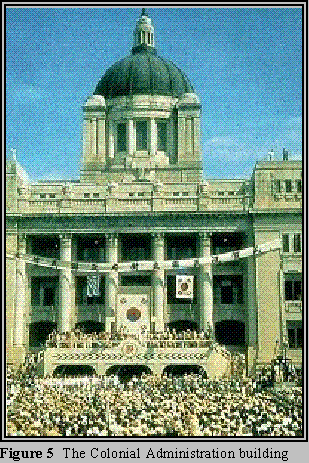
 On January 8 of 1918 President Wilson would put down his Fourteen Points
(see Appendix E), including within, the notion
of self-determination. `The points' were established in relation to achieving
a peace during the First World War, and it is doubtful whether Wilson could
have ever imagined the impact that these points would have held for the
people of many countries that were stirred by his statements, including
the people of Korea.
On January 8 of 1918 President Wilson would put down his Fourteen Points
(see Appendix E), including within, the notion
of self-determination. `The points' were established in relation to achieving
a peace during the First World War, and it is doubtful whether Wilson could
have ever imagined the impact that these points would have held for the
people of many countries that were stirred by his statements, including
the people of Korea.
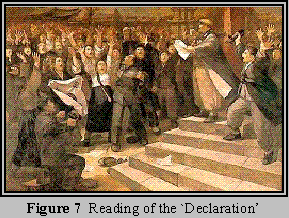
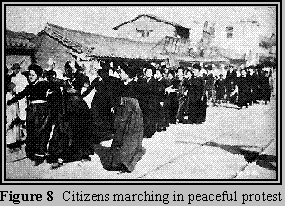
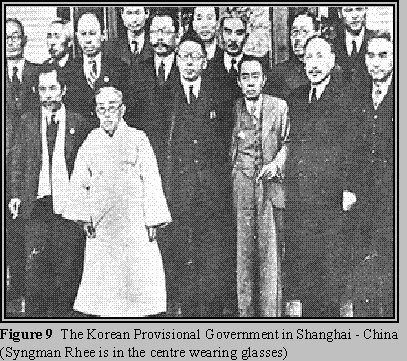






| Unknown | 3809
|
98 | 3907 |
| Unemployed | 1053 | 75 | 1128 |
| Unknown | 535 | 20 | 555 |
| TOTAL | 19054 | 471 | 19525 |